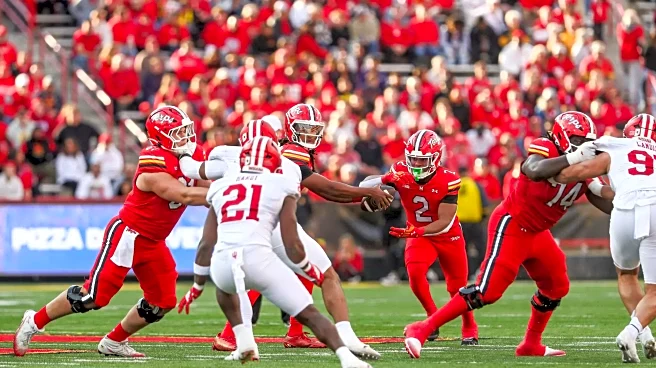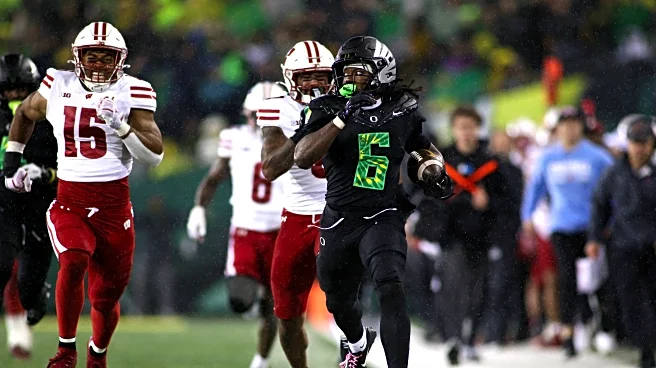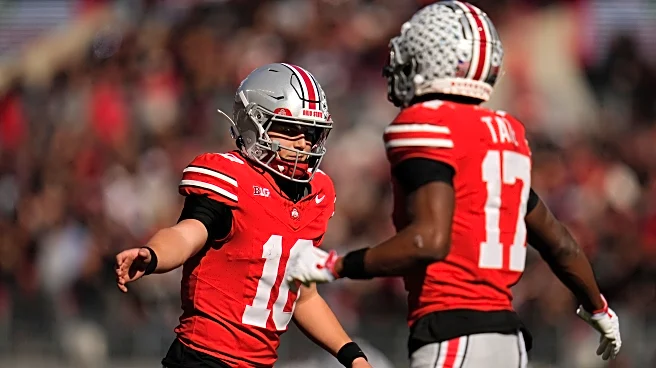It’s been a rough few weeks at Jones-Hill House.
Maryland football is riding a four-game losing streak that started with three losses by a combined 10 points and was most recently added to with a 55-10
shellacking at the hands of No. 2 Indiana.
But there’s a strong case for Rutgers being the weakest opponent Maryland has played since it defeated Wisconsin — its last win — in September. Both the Terps and Scarlet Knights desperately need a win Saturday, each needing two victories to clinch bowl eligibility with time running out to get there.
Kickoff is set for 2:30 p.m. at SHI Stadium in Piscataway, New Jersey. The game will air on FS1.
Rutgers Scarlet Knights (4-5, 1-5 Big Ten)
2024 record: 7-6, 4-5 Big Ten
Sixth-year head coach Greg Schiano’s program is in a similar spot to Maryland. The Scarlet Knights looked like a program on the rise, but they have taken a step back in 2025 after a brutal stretch of Big Ten losses.
Rutgers can still squeak out a bowl game with a win over the Terps and a win over either No. 1 Ohio State or — more likely — a newly-deflated Penn State team. It’ll be playing with its tail on fire Saturday.
The Scarlet Knights do come into the weekend limping, though, both figuratively and literally. A barrage of players are dealing with injury ailments, particularly in the team’s two weakest areas: offensive line and defense. That could mean blood in the water for Maryland’s strengths: pass rush and passing attack.
Players to know
Athan Kaliakmanis, senior quarterback, No. 16 — Kaliakmanis spent two seasons at Minnesota before moving across the conference to New Jersey. He’s been asked to carry a heavier load than any other Big Ten quarterback this season, leading the conference in completions (190), attempts (306) and passing yards (2476).
He’s not afraid to let plays develop and air the ball out — for better or worse. Kaliakmanis leads the Big Ten in average depth of target at 10.8 yards, but also leads it in sacks taken with 29, per Pro Football Focus.
KJ Duff, sophomore wide receiver, No. 8 — Duff transitioned to receiver after entering college as a four-star tight end prospect. His size and athleticism make him a perfect fit there; opposing defenses have borne the brunt of that position change. Duff’s 6-foot-6, 225-pound frame makes him a nightmare to guard deep. He leads the Big Ten in receiving yards (854), is second in receptions (51) and fourth in yards per reception (16.7).
Ian Strong, junior wide receiver, No. 9 — Strong’s profile fits his last name. He’s not quite as tall as his receiver counterpart, but still packs a punch at 6-foot-3 and 211 pounds. Strong is just as much of a threat down the field, averaging 14.6 yards per reception on 43 catches for 628 yards. He can give defenses serious problems given the attention Duff requires.
Eric O’Neill, senior defensive end, No. 99 — Even with all of their offensive starpower, head coach Michael Locksley called O’Neill the Scarlet Knights’ best player. There’s good reasons for that. O’Neill can play and produce from multiple spots on the line, even if his 2.5 sacks don’t jump off the paper. He leads the team in tackles for loss (5.5) and pressures (28), the latter by a wide margin.
Strength
Deep passing. Kaliakmanis isn’t afraid to give his receivers chances. Duff and Strong have a combined 54 contested catch opportunities on the season; no Maryland receiver has more than 10. Jamare Glasker, Dontay Joyner and the rest of the Terps’ up-and-down secondary will be tested repeatedly Saturday.
Weakness
Defense. Part of the reason for Rutgers’ offensive aggressiveness is its defense simply cannot get itself off the field. It allows 31.1 points per game, second-most in the Big Ten, and its one turnover per game is in the conference’s bottom five.
Three things to watch
1. Can Maryland’s edge rushers bounce back? Zahir Mathis missed Maryland’s game against UCLA and played just a single snap against Indiana, with the team trying to preserve his health in a blowout. This week, he shouldn’t be restricted. Look for Mathis and Sidney Stewart — who has 1.5 sacks in the past two games — to make a big impact against a depleted Rutgers offensive line.
2. Win the fourth quarter. It’s an obvious key to success, but something Maryland hasn’t done once in Big Ten play. Saturday’s game is between two relatively evenly-matched teams, and should be competitive entering the fourth quarter. The Terps simply cannot afford to lose another fourth quarter in a tight game. If Rutgers has a big lead entering the final frame, there’s bigger issues to worry about than previously thought.
3. Time is ticking on bowl eligibility. Maryland needs two wins for bowl eligibility. Its three other remaining games are on the road at Illinois — who received votes in this week’s Associated Press poll — at home against No. 21 Michigan and away from home against Michigan State. The Terps’ most likely path to a postseason requires beating Rutgers; otherwise, a big upset will be necessary for the season to not end up a complete failure.












